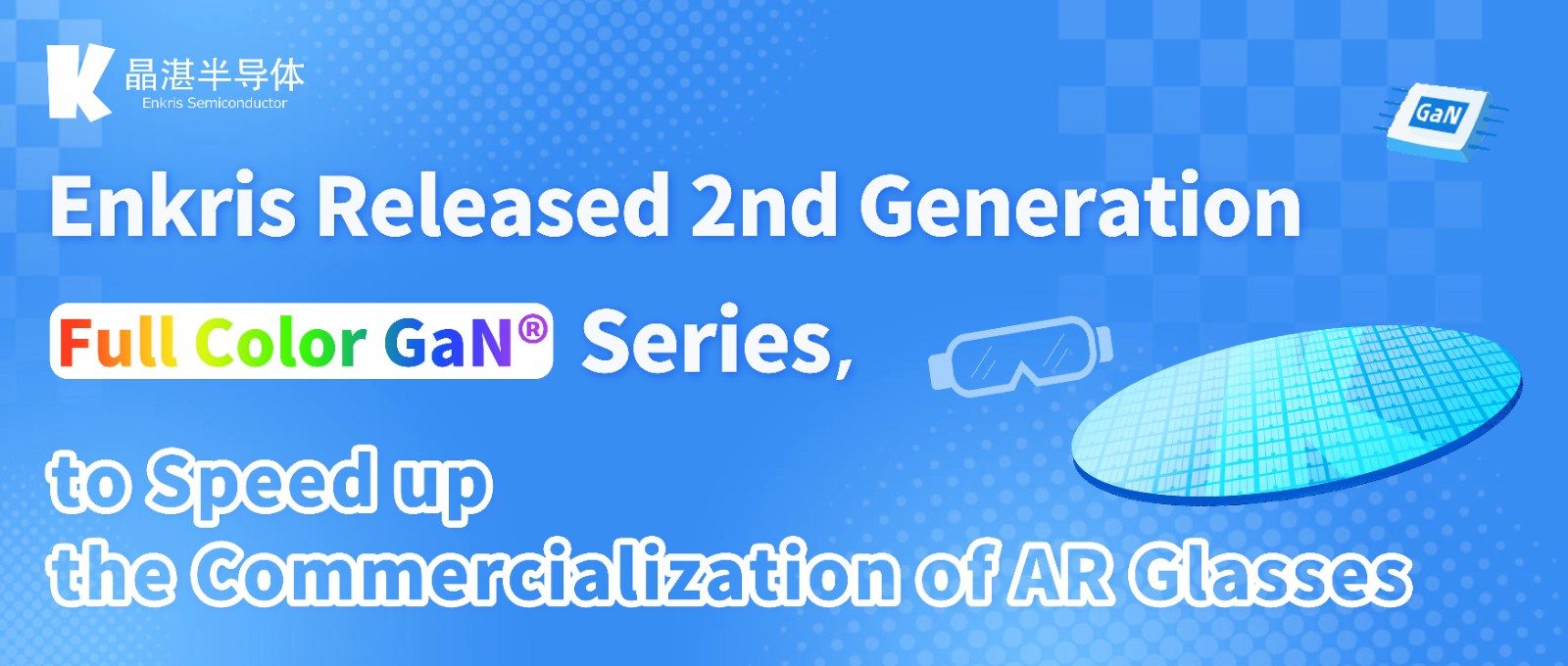As AR/VR devices accelerate their advancement toward retina-level displays, key obstacles on its commercialization path include the mismatch between epitaxial materials and CMOS drivers, plummeting efficiency caused by miniaturization, and uncontrollable yield rates in pixel arrays. Enkris Semiconductor unveiled its second-generation Full Color GaN® series epitaxial wafers validated by the ZDP™ platform during SEMICON CHINA 2025, bringing a breakthrough to the industry.
The new-generation silicon-based Full Color GaN® LED epitaxial wafers have achieved comprehensive performance upgrades. During the miniaturization of Micro-LEDs, when chip sizes shrink below 20 microns, the non-radiative recombination induced by sidewall defects causes internal quantum efficiency (IQE) to drop sharply. Through optimization of stress modulation layers and active region design in RGB epitaxial structures, the IQE of Enkris’ 8-inch blue GaN-on-Si LEDs now matches mainstream PSS substrate counterparts, while its green GaN-on-Si LEDs demonstrate comparable IQE to PSS-based devices under current densities >10A/cm². This breakthrough effectively addresses the challenge of carrier transport efficiency collapse during miniaturization, significantly enhancing current spreading capabilities in micron-scale chips.
As micro-LED pixel dimensions enter the sub-10-micron and even sub-micron scale, the defect rate of individual pixels rises exponentially with array density. Industry data reveals that for 1-micron-scale pixel arrays at the million-pixel level, initial yield rates typically fall below 60%, while AR devices requiring retina-grade displays demand pixel integrity rates exceeding 99.9999%. Conventional processes struggle to locate sub-micron-scale short-circuit or open-circuit defects due to the absence of wafer-level inspection methods.
Addressing this yield control challenge, Enkris has developed the ZDP™ platform – a collaborative “Material-Process-Verification” system leveraging its 200mm wafers process platform. This closed-loop quality control framework integrates Morphology Detection during epi growth, Process Monitoring, Testing Modules for wafer-level Micro-LED arrays. This platform has successfully produced sub-micron-scale Micro-LED arrays with high yield, great uniformity and high pixel density. This breakthrough significantly advances hybrid integration between Micro-LED arrays and Si COMS drivers with much reduced cost, which will definitely accelerate the commercialization of AR glasses.



